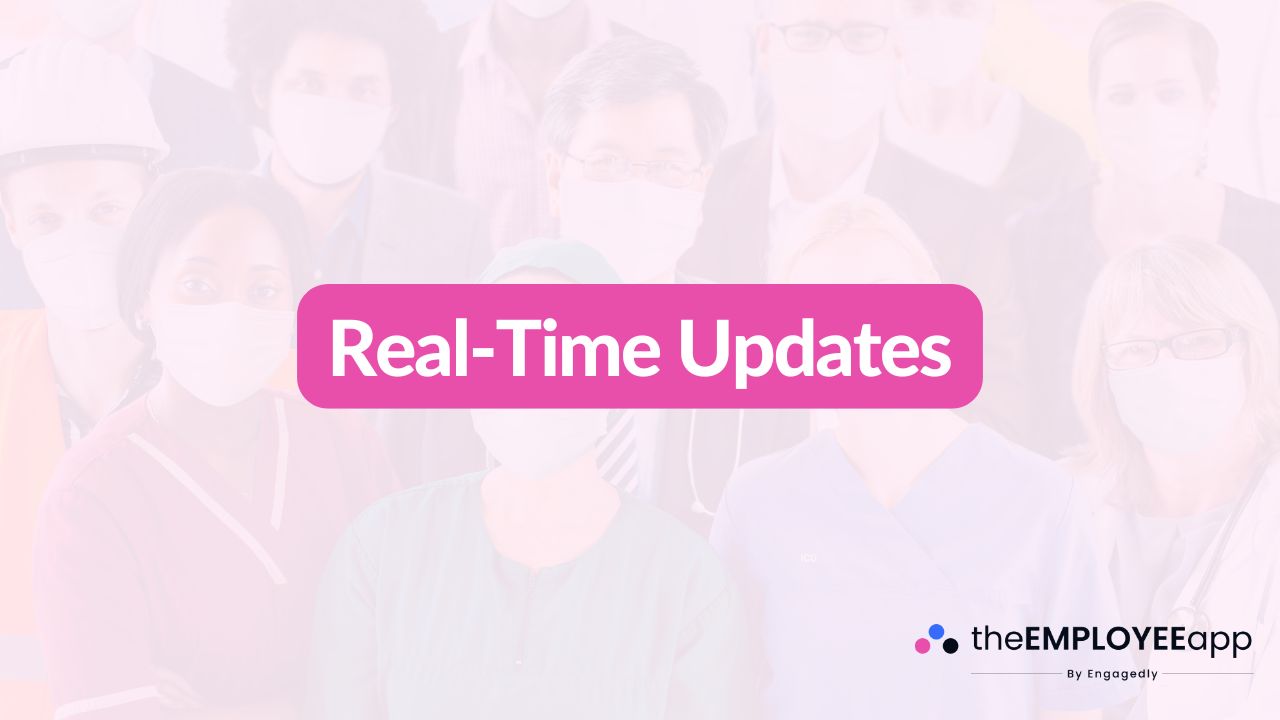
Real-Time Updates
Real-time updates refer to the immediate delivery and sharing of information as it happens. In the workplace, this means employees receive critical news, company announcements, or operational changes without delay, ensuring that everyone stays informed and aligned. Real-time updates are delivered through communication platforms, mobile apps, or messaging systems that provide instant visibility into what is happening across the organization.
Unlike traditional communication methods, where employees might have to wait for an email, a meeting, or a scheduled update, real-time updates ensure that information is shared instantly. This speed helps organizations remain agile, reduce confusion, and enable faster decision-making. In industries where timing is everything, such as healthcare, logistics, or frontline work, this can make a significant difference in both efficiency and safety.
Why Real-Time Updates Are Important
The modern workplace is fast-paced and constantly changing. Real-time updates empower leaders and teams to respond quickly to new challenges, opportunities, or emergencies. Employees no longer need to search for the latest information because it comes directly to them as soon as it is available.
For example, real-time updates can notify employees about urgent safety alerts, last-minute schedule changes, new policies, or shifts in company strategy. This level of immediacy helps avoid miscommunication, keeps employees focused, and ensures they always have access to the most accurate information.
Benefits of Real-Time Updates in the Workplace
Improved communication: Employees no longer rely on delayed or outdated information, leading to fewer misunderstandings.
Enhanced productivity: Teams can act quickly, without waiting for updates in meetings or emails.
Better employee engagement: Instant updates create a sense of transparency and trust between employers and employees.
Safety and compliance: Critical alerts, especially in high-risk industries, can be shared immediately to protect employees and ensure compliance.
Stronger alignment: Real-time updates ensure everyone in the organization is working from the same information.
Key Use Cases for Real-Time Updates
Emergency notifications: Informing employees about urgent events like weather conditions, workplace hazards, or system outages.
Operational changes: Sharing updates about shift changes, resource availability, or scheduling adjustments.
Company news: Delivering announcements such as leadership changes, policy updates, or new initiatives.
Employee recognition: Highlighting achievements and milestones as they happen, boosting morale.
Performance tracking: Providing instant updates on project progress or metrics.
How Real-Time Updates Support Frontline and Deskless Employees
Frontline and deskless employees often lack access to traditional communication tools like email or intranet systems. Real-time updates delivered via mobile apps ensure these employees receive the same level of information as office-based staff. This levels the playing field, reducing communication gaps and making sure every employee feels included and informed.
For example, a retail associate can receive an instant update about a product recall, or a warehouse worker can get a real-time notification about a shift change. By bringing critical updates directly to their devices, organizations empower these employees to stay agile and prepared.
Best Practices for Implementing Real-Time Updates
Use clear messaging: Keep updates short, simple, and easy to understand.
Segment audiences: Send updates only to the employees who need them to reduce information overload.
Prioritize urgency: Not every message needs to be real-time. Reserve this format for critical or time-sensitive information.
Leverage mobile platforms: Ensure employees can receive updates on their smartphones for maximum reach.
Maintain consistency: Regularly use real-time updates so employees know where to expect important information.
The Future of Real-Time Updates in the Workplace
As technology continues to evolve, real-time updates will become even more advanced and integrated into workplace systems. Artificial intelligence may help filter and prioritize updates, ensuring employees only see the most relevant information. Integration with collaboration tools, scheduling systems, and analytics platforms will make updates not only faster but also more personalized and actionable.
Ultimately, real-time updates represent the future of workplace communication. They empower employees to act quickly, align with organizational goals, and feel more connected to their company. By adopting real-time communication practices, organizations can enhance productivity, improve employee trust, and stay agile in an ever-changing business landscape.
